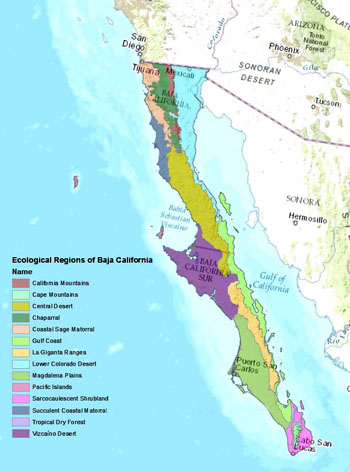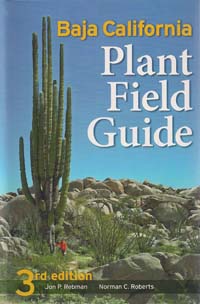_newLogo.jpg)
_newLogo.jpg) |
 The Ecological Regions of the Baja Peninsula View larger map. |
The geographic position, latitudinal span, and topographic heterogeneity of the Baja California peninsula give the region a diverse assemblage of weather regimes including a Mediterranean-type, winter rainfall climate; extremely arid, hot desert conditions; and tropical, summer rainfall patterns. In addition, the region's biogeographic history and physiognomy have resulted in a wide range of vegetation types which include: coastal chaparral, conifer forest, low desert scrub, and tropical deciduous forest. As a result, this arid piece of land and its adjacent islands supports a wealth of plant diversity. It is estimated that the flora consists of more than 4,000 plant taxa with approximately 30% of these known only from Lower California, Mexico (the states of Baja California and Baja California Sur). Many of the plants from the peninsula and its islands are quite unique and can stretch one's imagination in respect to plant form and structure including the bizarre Boojum Tree/Cirio (Fouquieria columnaris); the giant Cardón cactus (Pachycereus pringlei); elephant trees (Pachycormus discolor and Bursera spp.); and large, succulent caudiciforms (Ibervillea sonorae). |
|
The Baja California Plant Field Guide presents an extensive body of information on the climate, geology, ecological regions, conservation efforts, plant endemism, and nonnative and invasive plants of the Baja Peninsula. This in addition to photographs and narratives on hundreds of the most significant plants of Baja. |
 |